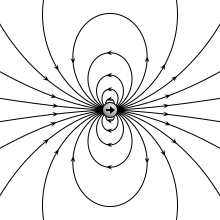Semiempirical
Introduction
Hartree-Fock (HF) theory belongs to a class of methods coined ab initio, because all molecular integrals that are required are analytically or numerically evaluated. Semiempirical methods use parametric expressions for some integrals so that the calculation of electronic energies is simplified. There is however not a clear distinction between classes of methods because, e.g., basis set parameters can be parametrised for specific ends.
Ab initio methods require typically large basis sets so the calculations converge to reasonable values. Semiempirical methods use minimal basis sets instead. In the end, due to all approximations, semiempirica methods lie somewhere between ab initio (or DFT) and molecular mechanics: they are based on a quantum mechanical treatment of the system; the integral evaluation is quick. Here we focus on semiempirical methods.
Perhaps the main reason why so much effort was placed in the development of semiempirical methods is the fact that reasonable results are obtained at a much lower computational cost. Integral evaluation is enormously simplified to say the least. There is to my knowledge no semiempirical method that considers 3- or 4-center electron repulsion integrals and even a great deal of the calculation of 2-center electron repulsion integrals is very much simplified. This was an essential feature in the success of these methods because solving most of molecular integrals using Slater type orbitals is a very arduous task. By appropriately parametrising integrals, semiempirical methods approximate to some good degree ab initio calculations or experimental results. However, not even the best parametrisation can fix faults from the underlying theory these methods are based upon, which can be Hartree-Fock or Density Functional Theory.
Despite the great advances of modern quantum chemistry, semiempirical methods still enjoy some degree of success because people will always want to calculate larger systems, and lets face it, we are all impatient to get results quickly.

source: wiki
Extended Hueckel
Perhaps the first semiempirical method worth exploring is the extended Hueckel, the generalisation of the Hueckel method for σ orbitals as well. The original Hueckel method was employed to find wavefunctions and study some properties of π systems. It was with the help of the extended Hueckel method that Woodward and Hoffmann determined their famous set of rules for justifying pericyclic reactions in organic chemistry.
Zero Differential Overlap and CNDO Methods
The next advent in semiempirical methods comes with the introduction of the zero differential overlap approximation (ZDO), which states that the product of two orbitals centered in atoms A and B is non-zero if A=B and the orbitals are the same.
The approximation is applied to spherically symmetric operators and was first employed to π-systems in the Pariser-Parr-Pople method (Lykos, P.; Parr, R. G.; J. Chem. Phys., 24, 1166, 1956; Pariser, R.; Parr, R. G.; J. Chem. Phys.; 21, 466, 1953; Pariser, R.; Parr, R. G.; J. Chem. Phys., 21, 767, 1953; Pople, J. A.; Trans. Far. Soc., 49, 1375, 1953). The first successful extension to σ– and π-systems was due to Pople and coworkers with the first complete neglect of differential overlap (CNDO/1) method.
CNDO/1 suffers from many faults due to the underlying approximations, and the method was later modified by the same group, yielding what is now currently known as CNDO/2.
Other variants of the method were also developed in other groups, like CNDO/BW and CNDO/BG.
The INDO Scheme
The next extension in semiempirical MO theory come with the introduction of the intermediate neglect of differential overlap (INDO) methods, by including all one-center-two-electron integrals in the Fock matrix. It was originally thought as a compromise between the lack of accuracy of CNDO methods and the (back then) large number of integrals required in other more complete schemes. It is therefore no longer a faithful implementation of the ZDO, but it is also not quite the next level of approximation, hence the intermediate in the theory’s name. We explore in the attached files the INDO methods of Pople and the extension of CNDO/BG to the INDO method, mentioning briefly other methods.
Even though these methods showed their successes, it is very complicated to parameterise them in a generally applicable way that is furthermore also reliable. With the next level of approximation one gains more transferability of parametrisations and significantly higher accuracy. This is the neglect of diatomic differential overlap approximation (NDDO).
The NDDO Approximation
The Neglect of Diatomic Differential Overlap is the next level of approximations used in semiempirical quantum chemistry and the basis of most modern semiempirical methods based on the Hartree-Fock method.
Here the most important methods came from the school of Michael Dewar. One should mention the MNDO, AM1, PMx and RM1 as being some of the most influential and used NDDO methods.
There are other methods worth referencing, even though we do not explore them in further detail.

source: wiki
Enhancing NDDO Methods
In themselves, semiempirical MO theory is still quite limited in its predictive power. It is however possible to get more information from these methods by adding further extensions. Charge models aim at introducing a better description of partial charges, so that observables like molecular dipole moments are more accurate.
Density Functional Tight Binding
An alternative approach to ZDO semiempirical methods is density functional tight binding (DFTB). Here one starts from the full DFT energy and applies successive approximations based on the Taylor expansion to the electronic density. This methodology has been mostly used by solid state and biochemistry groups, who require a method that is particularly low-cost to treat their large systems. Agreement with experimenta is obtained via the parametrisation, though typically each parameter-set was restricted to particular applications. Modern DFTB schemes offer better transferability of the parametrisation.
